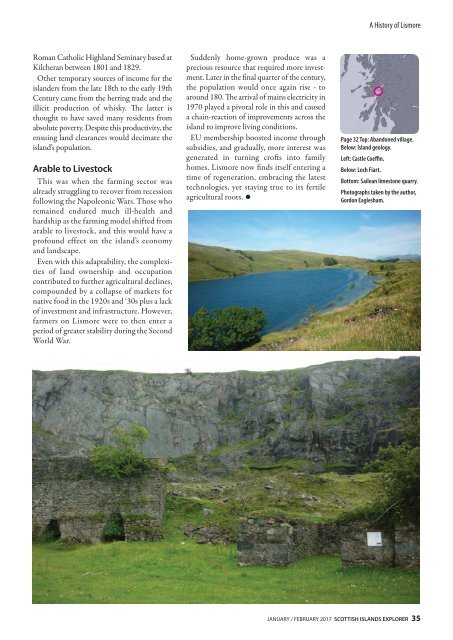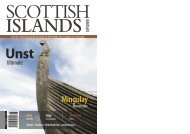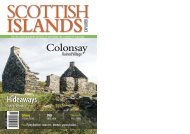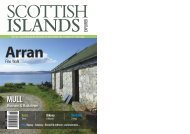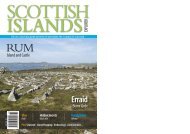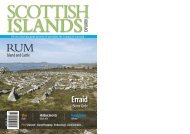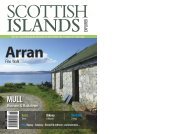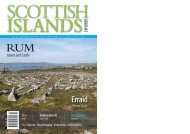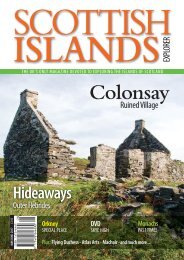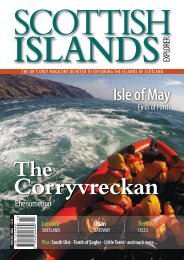Create successful ePaper yourself
Turn your PDF publications into a flip-book with our unique Google optimized e-Paper software.
A History of Lismore<br />
Roman Catholic Highland Seminary based at<br />
Kilcheran between 1801 and 1829.<br />
Other temporary sources of income for the<br />
islanders from the late 18th to the early 19th<br />
Century came from the herring trade and the<br />
illicit production of whisky. e latter is<br />
thought to have saved many residents from<br />
absolute poverty. Despite this productivity, the<br />
ensuing land clearances would decimate the<br />
island’s population.<br />
Arable to Livestock<br />
This was when the farming sector was<br />
already struggling to recover from recession<br />
following the Napoleonic Wars. Those who<br />
remained endured much ill-health and<br />
hardship as the farming model shifted from<br />
arable to livestock, and this would have a<br />
profound effect on the island’s economy<br />
and landscape.<br />
Even with this adaptability, the complexities<br />
of land ownership and occupation<br />
contributed to further agricultural declines,<br />
compounded by a collapse of markets for<br />
native food in the 1920s and ‘30s plus a lack<br />
of investment and infrastructure. However,<br />
farmers on Lismore were to then enter a<br />
period of greater stability during the Second<br />
World War.<br />
Suddenly home-grown produce was a<br />
precious resource that required more investment.<br />
Later in the final quarter of the century,<br />
the population would once again rise - to<br />
around 180. e arrival of mains electricity in<br />
1970 played a pivotal role in this and caused<br />
a chain-reaction of improvements across the<br />
island to improve living conditions.<br />
EU membership boosted income through<br />
subsidies, and gradually, more interest was<br />
generated in turning cros into family<br />
homes. Lismore now finds itself entering a<br />
time of regeneration, embracing the latest<br />
technologies, yet staying true to its fertile<br />
agricultural roots.<br />
Page 32 Top: Abandoned village.<br />
Below: Island geology.<br />
Left: Castle Coeffin.<br />
Below: Loch Fiart.<br />
Bottom: Sailean limestone quarry.<br />
Photographs taken by the author,<br />
Gordon Eaglesham.<br />
JANUARY / FEBRUARY <strong>2017</strong> SCOTTISH ISLANDS EXPLORER 35


